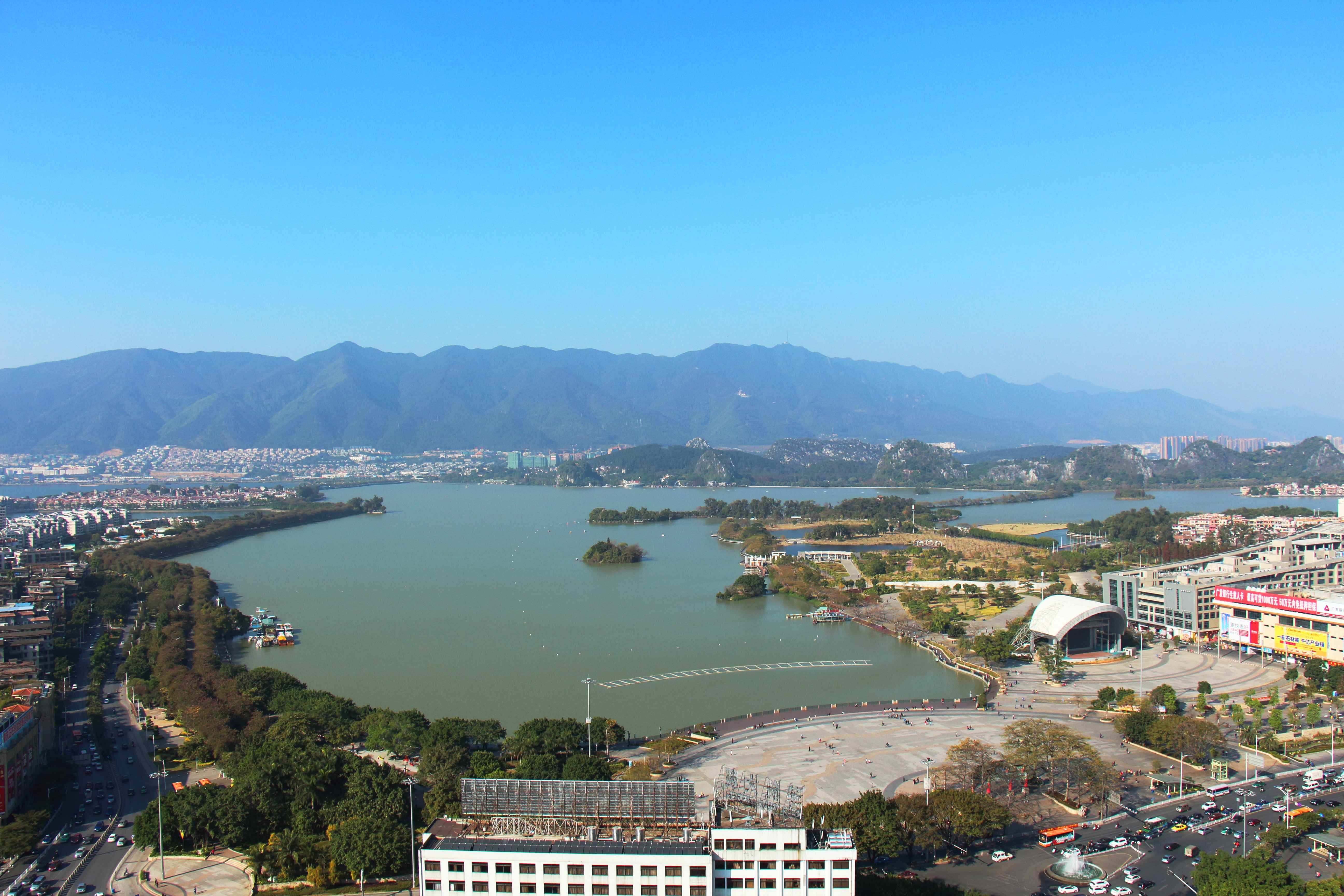|
Guangning
Guangning County, alternately romanized as KwongningCounty, is a county in western Guangdong, China, under the administration of the prefecture-level city of Zhaoqing. Guangning County has an area of , with a population of 540,000. Name The ''Explanation of County Names'' states that the name of Guangning County—literally "widely" or "broadly pacified"—is a reference to the defeat of a large mob of bandits by the central government in 1559, shortly before the founding of the county. History Guangning County was founded on October 30, 1559, under the Jiajing Emperor of the Ming. It has formed part of Zhaoqing since at least the Qing. Geography and climate Lying in the valley of Sui River, Guangning has been developing along the riversides. Surrounded by green hills and mountains, Guangning is considered as a pearl in a greenery cradle. Average temperature in January is , in July is , with an annual precipitation of . Administrative divisions The town of Nanjie is th ... [...More Info...] [...Related Items...] OR: [Wikipedia] [Google] [Baidu] |
Battle Of Guangning
The Battle of Guanging () was a military conflict between the Later Jin dynasty and the Ming dynasty in 1622. It occurred around the Ming's northern city of Guangning (now Beizhen, Liaoning), which fell to the Later Jin in 1622. Background In Sichuan and Guizhou a major rebellion by indigenous peoples had broken out the previous year, and the Ming dynasty was thrown into a major rebel crisis. Meanwhile in Liaoning, Wang Huazhen, Vice Censor-Chief of the Right and Touring Pacification Commissioner of Guangning, proposed hiring 400,000 Mongols to attack the Jurchens. The officials at the Ming court thought this was a dumb idea and refused the proposal. As of 1622 the Ming dynasty had spent 21,188,366 taels on the war in Liaodong over a three-year period. With the allotted funds for weapons manufacturing, 25,134 cannons, 6,425 muskets, 8,252 small guns, and 4,090 culverins had been produced for a total of 43,901 firearms. In terms of cold weapons, 98,547 polearms and swords, 2 ... [...More Info...] [...Related Items...] OR: [Wikipedia] [Google] [Baidu] |
Guangning, Liaoning
Beizhen () is a city in west-central Liaoning province of Northeast China. It is under the administration of Jinzhou City. History In 1123, the Jin Dynasty set Guangning County () in nowadays Beizhen. In Ming Dynasty, the town of Guangning became a base of the Ming troops in Liaotung and a prosperous border trading center. In 1913, the name was changed to Beizhen, which is an alternative name of the Yiwulü Mountain, literally meaning "the guarding mountain of the North". In 1995, Beizhen County became Beining City (), the name of which is later changed to the current name. Administrative divisions There are three subdistricts, 14 towns, and six townships under the city's administration. Subdistricts: *Beizhen Subdistrict (), Guangning Subdistrict (), Guanyin'ge Subdistrict () Towns: *Dashi (), Zheng'an (), Zhong'an (), Luoluobao (), Changxingdian (), Lüyang (), Goubangzi (), Liaotun (), Qingduizi (), Gaoshanzi (), Zhaotun () Townships: * Futun Township (), Baojia ... [...More Info...] [...Related Items...] OR: [Wikipedia] [Google] [Baidu] |
Zhaoqing
Zhaoqing (), alternately romanized as Shiuhing, is a prefecture-level city in Guangdong Province, China. As of the 2020 census, its population was 4,113,594, with 1,553,109 living in the built-up (or metro) area made of Duanzhou, Dinghu and Gaoyao. The prefectural seat—except the Seven Star Crags—is fairly flat, but thickly forested mountains lie just outside its limits. Numerous rice paddies and aquaculture ponds are found on the outskirts of the city. Sihui and the southern districts of the prefecture are considered part of the Pearl River Delta. Formerly one of the most important cities in southern China, Zhaoqing lost its importance during the Qing dynasty and is now primarily known for tourism and as a provincial "college town". Residents from Guangzhou, Shenzhen, and the other cities of the Pearl River Delta often visit it for weekend excursions. It is also a growing manufacturing center. Name Zhaoqing was known to the Qin and Han as Gaoyao (高要). I ... [...More Info...] [...Related Items...] OR: [Wikipedia] [Google] [Baidu] |
Wuhe, Guangdong
Wuhe () is a town under the administration of Guangning County, Guangdong Guangdong (, ), alternatively romanized as Canton or Kwangtung, is a coastal province in South China on the north shore of the South China Sea. The capital of the province is Guangzhou. With a population of 126.01 million (as of 2020 ..., China. , it administers Wuhe Residential Community and the following six villages: *Xiayuan Village () *Jiangbu Village () *Zhuangyuan Village () *Zhenyuan Village () *Henggang Village () *Cunxin Village () References Township-level divisions of Guangdong Guangning County {{Guangdong-geo-stub ... [...More Info...] [...Related Items...] OR: [Wikipedia] [Google] [Baidu] |
Kengkou (town)
Kengkou (), meaning “tunnel exit”, may refer to: * Hang Hau, a residential area in Tseung Kwan O, Sai Kung, New Territories, Hong Kong ** Hang Hau Village, a village in Sai Kung District, New Territories, Hong Kong * Kengkou, Guangning County, Guangdong Province, China * Kengkou Township, She County, Anhui Province, China * Kengkou Village (坑口里), Luzhu District, Taoyuan, Taiwan * Kengkou Village (坑口里), Wufeng District, Taichung, Taiwan * Kengkou Village (坑口村), Yamen A ''yamen'' (''ya-men''; ; Manchu: ''yamun'') was the administrative office or residence of a local bureaucrat or mandarin in imperial China. A ''yamen'' can also be any governmental office or body headed by a mandarin, at any level of gover ..., Xinhui District, Jiangmen, Guangdong, China See also * Kengkou station (other) {{Disambiguation, place ... [...More Info...] [...Related Items...] OR: [Wikipedia] [Google] [Baidu] |

